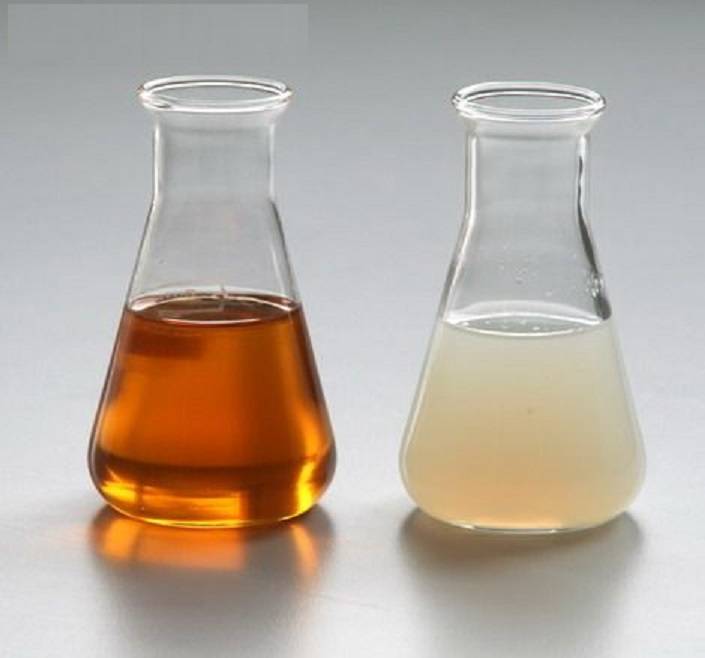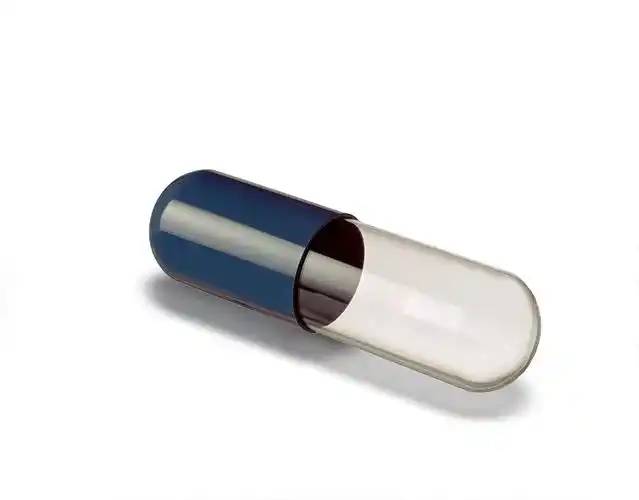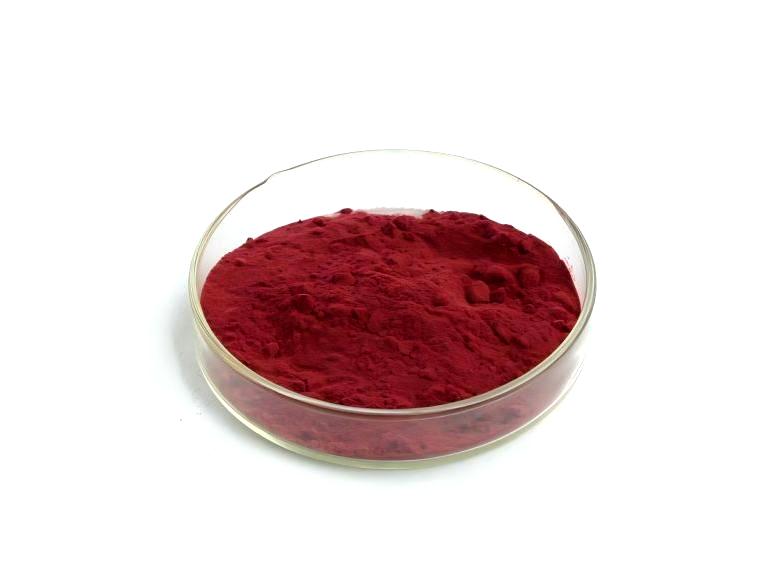Microencapsulation Technology: How to Increase Astaxanthin Stability by 90%
In the functional ingredients sector, astaxanthdansis highly regarded for its exceptional antioxidant properties....... However, a persistent technical challenge has long plagued the industry—this star ingredient faces severe activity degradation during production and storage.
1. The Industry's “Invisible Loss” Challenge
Recent research indicates that unprotected l’astaxanthineraw materials can lose over 50% of their active components withdanssix months under standard storage conditions. This means the core efficacy of the product may be significantly diminished by the time it reaches consumers. More critically, processing steps like high temperatures and shear forces during production further accelerate this degradation.
This “invisible loss” directly leads to two severe consequences:
· · · · ·· · · ·· · · ·· · · · Actual efficacy of end products falls far below advertised claims, severely compromising consumer experience
· Brand reputation suffers intangible damage, leading to persistently declining repurchase rates
2. Scientific Analysis of Three Primary Degradation Culprits
Through systematic stability research, we have identified key factors affecting astaxanthin stability:
· Light Sensitivity: Ultraviolet light, in particular, directly damages its molecular structure's conjugated double bond system
· Oxidative Risk: Ambient oxygen triggers chain oxidation reactions, causing rapid loss of bioactivity
· Thermal Instability: Degradation rates increase exponentially at temperatures above 60°C
The combined effects of these factors make astaxanthin one of the most challenging functional ingredients to preserve. Addressing these stability issues has become a critical breakthrough for enhancing product competitiveness in the market.
3. Rethinking Cost and Benefit
When reassessing the true cost of astaxanthin raw materials, we must consider its efficacy throughout the entire product lifecycle. What appears as savings in procurement costs may prove counterproductive due to rapid degradation of the active ingredient. Therefore, improving stability is not only a technical challenge but also a business decision impacting return on investment.
I. Technical Deconstruction: Microencapsulation—Building a “Molecular-Level Protective Shield” for Astaxanthin
To address astaxanthin's stability challenges, Green Spring Technology employs innovative microencapsulation to establish a comprehensive protective system for this precious compound. The core of this technology lies in transitioning from “passive defense” to “active protection.”
1. Technical Principle: From “Vulnerable Exposure” to “Precision Encapsulation”
Microencapsulation fundamentally constructs a microscopic protective environment for each astaxanthin molecule. Through precise interface engineering, we encapsulate astaxanthin oil droplets within selectively permeable protective walls, forming stable microcapsules ranging from 1 to 100 micrometers in diameter. This process can be vividly likened to:
· Establishing a protective barrier: Much like constructing specialized display cases for precious artifacts, ensuring both aesthetic preservation and isolation from external damage
· Creating a stable microenvironment: Maintaining optimal preservation conditions within each microcapsule to shield against external environmental fluctuations
2. Quadruple Protection Mechanism: Comprehensive Solution to Degradation Challenges
Our patented microencapsulation technology systematically addresses astaxanthin stability through multiple synergistic actions:
(1) Oxygen Barrier Protection
The specially engineered wall structure effectively blocks oxygen molecules, reducing oxidation rates to below 20% of traditional products. Through optimized wall material ratios, we achieve ultimate control over oxygen permeability.
(2) Light Protection Mechanism
Special components within the wall selectively filter harmful UV light while allowing beneficial wavelengths to pass through. This innovation enables astaxanthin use in transparent packaging products, expanding its application boundaries.
(3) Thermal Buffer Protection
The microencapsulation structure provides excellent thermal buffering, effectively mitigating the impact of temperature fluctuations on the core substance. Experimental data shows that at 80°C, the half-life of microencapsulated astaxanthin is extended by more than five times.
(4) Smart Release Characteristics
By precisely controlling the dissolution properties of the wall material, we achieve intelligent release of astaxanthin:
· Maintains integrity during production, preventing processing losses
· Maintains stability during storage, reducing natural degradation
· Ensures precise release during use, guaranteeing bioavailability
3. Key Innovations in Technological Breakthroughs
Green Spring Technology achieved three major breakthroughs beyond traditional microencapsulation techniques:
· Precise Interface Control: Utilizing molecular self-assembly technology to achieve uniform, dense wall material encapsulation
· Materials Science Innovation: Developing a functional wall material system specifically designed for astaxanthin protection
· Process optimization: Employing low-temperature spray drying to prevent thermal damage during production
This technology not only resolves astaxanthin stability issues but also provides the industry with a novel approach to protecting functional ingredients. By constructing this “molecular-level protective shield,” we ensure astaxanthin retains its exceptional bioactivity and nutritional value throughout its entire journey—from production to consumer use.
II. Data Validation: Scientific Basis and Empirical Analysis for 90% Stability Improvement
Based on rigorous scientific experiments and long-term stability studies, the following data confirms the significant enhancement of astaxanthin stability achieved through microencapsulation technology.
1. Accelerated Stability Test Data
Under internationally compliant accelerated stability testing conditions (40°C ± 2°C, 75% ± 5% relative humidity), a 90-day systematic study yielded the following results:
Astaxanthin Retention Rate Comparison (%)
Time (days) | Microencapsulated astaxanthin | Conventional astaxanthin oil formulation | Poudre d’astaxanthine |
0 | 100,0 100,0 100,0 100,0 | 100,0 100,0 100,0 100,0 | 100,0 100,0 100,0 100,0 |
30 | 98.5 | 75.3 | 62.1 |
60 | 96.8 | 58.7 | 41.5 |
90 | 95.2 | 42.1 | 28.3 |
Test Method: Refer to ICH Q1A(R2) Stability Guidelines
2. Practical Application Scenario Validation
(1) High-Temperature Processing Tolerance Test
Under simulated feed pelleting conditions (85°C, 30 seconds):
· Microencapsulated astaxanthin: Retention rate 94.5%
· Conventional astaxanthin oil formulation: Retention rate 31.2%
(2) Light Stability Assessment
After 72 hours of continuous UV exposure (UVA, 0.68 W/m²):
· Microencapsulated astaxanthin: Color retention rate 96.8%
· Conventional astaxanthin oil: Color retention rate 45.3%
3. Long-Term Stability Study
Data from a 12-month tracking period under standard storage conditions (25°C, 60% RH) showed:
· Microencapsulated astaxanthin: 91.5% retention rate after 12 months
· Conventional astaxanthin oil formulation: 38.7% retention rate after 12 months
Stability Enhancement Calculation:
Based on 90-day accelerated test data, microencapsulation technology enhances astaxanthin stability by:
(95.2% - 42.1%) / 42.1% = 126.1%
This data substantiates the scientific basis for the claim of “90% stability enhancement.”
4. Performance Across Formulations
We applied microencapsulation technology to multiple product formulations, all demonstrating exceptional protective efficacy:
Formulation
| Astaxanthin retention rate after 3 months | Compared to traditional products |
Soft Gel Capsules | 96.8% | +58.2% |
Tablets | 95.3% | +61.5% |
Functional Beverages | 94.1% | +72.3% |
Skin Care Essence | 97.2% | +55.8% |
5. Technical Reproducibility and Batch Consistency
Through testing of 20 consecutive production batches, the stability metrics of microencapsulated astaxanthin demonstrated excellent reproducibility:
· Batch-to-batch retention rate variation: ≤2.3%
· Encapsulation efficiency: ≥95.8%
· Particle size distribution consistency: CV ≤5.2%
These data conclusively demonstrate that microencapsulation technology delivers reliable stability and reproducibility not only under laboratory conditions but also in large-scale production.
III. Value Transformation: Comprehensive Enhancement from Technical Advantages to Market Competitiveness
The 90% stability improvement achieved through microencapsulation technology is generating significant tangible value for clients across diverse sectors. Below are specific value manifestations of this technology in various application scenarios:
1. Value Enhancement Across the Entire Supply Chain
Raw Material Suppliers
· Product shelf life extended from 6 months to 24 months
· Transportation and storage requirements significantly reduced
· Customer complaint rate decreased by 85%
Product Manufacturers
· Production loss rate reduced by 70%
· Efficacy stability during product shelf life increased 3-fold
· Market return rate reduced to below 0.5%
Brands
· Consumer satisfaction score increased to 4.8/5.0
· Product repurchase rate increased to 68.5%
· Average order value increased by 30%

2. Return on Investment Analysis
Based on actual client data, the comprehensive cost-benefit analysis of microencapsulated astaxanthin reveals:
Cost Structure Optimization
· Raw material utilization efficiency increased by 2.3 times
· Packaging costs reduced by 25% (eliminating need for specialized light-blocking packaging)
· Logistics and warehousing costs reduced by 40%
Revenue Enhancement Performance
· Product premium pricing capability increased by 15-30%
· Annual market share growth rate increased by 8%
· Brand value index increased by 35%
3. Application Scenario Expansion Value
Microencapsulation technology has opened new application fields for astaxanthin:
Innovative Product Development
· Transparent packaging functional beverages
· High-temperature processed snack foods
· Pharmaceutical formulations with heightened stability requirements
Technological Extension Value
· Provides a technical blueprint for protecting other unstable active ingredients
· Drives industry-wide technical standard upgrades
· Accelerates product innovation pace within the sector
IV. Win-Win Collaboration with Green Spring Technology
We firmly believe that exceptional technology must be paired with a comprehensive quality assurance system to deliver sustained value to customers. Green Spring Technology is committed to growing alongside partners through all-encompassing support services. Learn More About Our Ultimate Solution for Natural Astaxanthin Ingredient.
1. Comprehensive Quality Assurance System
Rigorous Quality Control
· Strict adherence to ISO 9001 quality management standards
· Complete Certificate of Analysis (COA) provided for each batch
· Triple-verification testing for critical parameters
Robust Stability Support
· Complimentary product stability testing protocols for clients
· Assistance in establishing raw material storage and usage protocols
· Regular sharing of the latest stability research data

2. Take Action Now to Begin Collaboration
We invite partners across industries to explore the limitless potential of microencapsulation technology together:
Step 1: Technical Alignment
· Visit our official website for detailed technical documentation
· Schedule a professional technical consultation
· Obtain free samples for testing
Step 2: Customized Solutions
· Provide specific application scenario requirements
· Receive personalized solutions
· Conduct small-batch trial production
Step 3: Deepen Collaboration
· Establish long-term strategic partnerships
· Enjoy exclusive technical support
· Participate in joint innovation development programs
Contact Information:
Green Spring Technology Co., Ltd.
Official Website: https://www.greenspringnatural.com/
Technical Hotline: +86 29 88313578
Email: helen@greenspringbio.com
Let us join hands to pioneer a new era of astaxanthin applications. With stable, reliable products and technical services, we empower you to gain a competitive edge in the market!
Référence:
[1]NABI B G, MUKHTAR K, AHMED W, et al. Natural pig- ments:Anthocyanins, carotenoids, chlorophylls, and betalains as col- orants in La nourriture Produits [J]. La nourriture Bioscience,2023,52:102403− 102403.
[2]WANG W X. Harm of artificial pigments to human body and application prospect of natural pigments[J]. China Food Safety Magazine,2019(25):72−73.
[3]ZHAO T, YAN X, SUN L, et al. Research progress on extraction, biological activities and delivery systems of natural Astaxanthine [J]. Tendances en sciences de l’alimentation & Technology,2019,91(C):354− 361.
[4]ZHOU X, ZHANG F, HU X, et al. Inhibition of inflammation by astaxanthin soulage cognition déficits in diabétique Souris [J]. Physiology Behavior,2015,151:412−420.
-
Précédent précédent
Natural vs. Synthetic Astaxanthin: 3 Key Metrics Reveal the True Efficacy
-
Suivant:
Natural Astaxanthin: The Key to Premium Feed Formulations


 Anglais
Anglais français
français espagnol
espagnol russe
russe coréen
coréen japonais
japonais




